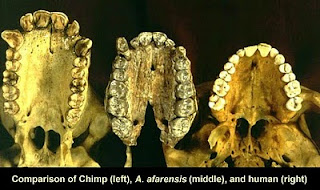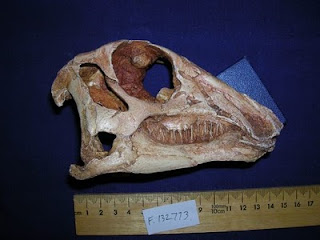Here's the organ:
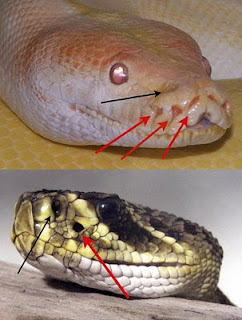

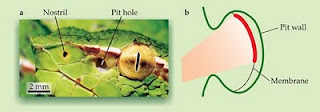
"Essentially, it allows these animals to “see” radiant heat at wavelengths between 5 and 30 μm to a degree of accuracy such that a blind rattlesnake can target vulnerable body parts of the prey at which it strikes"
"The facial pit actually visualizes thermal radiation using the same optical principals as a pinhole camera, wherein the location of a source of thermal radiation is determined by the location of the radiation on the membrane of the heat pit. However, studies that have visualized the thermal images seen by the facial pit using computer analysis have suggested that the resolution is actually extremely poor. The size of the opening of the pit results in poor resolution of small, warm objects, and coupled with the pit's small size and subsequent poor heat conduction, the image produced is of extremely low resolution and contrast. It is known that some focusing and sharpening of the image occurs in the lateral descending trigeminal tract, and it is possible that the visual and infrared integration that occurs in the tectum may also be used to help sharpen in the image. In addition, snakes may deliberately choose ambush sites with low thermal background radiation (colder areas) to maximize the contrast of their warm prey in order to achieve such a high degree of accuracy from their thermal “vision”."
"he organ is used extensively by them to detect and target warm-blooded prey such as rodents and birds, and it was previously assumed that the organ evolved specifically for that purpose. However, recent evidence shows that the pit organ may also be used for thermoregulation. In an experiment that tested snakes' abilities to locate a cool thermal refuge in an uncomfortably hot maze, all pitvipers were able to locate the refuge quickly and easily, while true viperswere unable to do so. This suggests that the pitvipers were using their pit organs to aid in thermoregulatory decisions."
http://en.wikipedia.org/wiki/Infrared_sensing_in_snakes#cite_note-KM-0
"Take a whiff of mustard or wasabi and you’ll be hit with a familiar burning sensation. That’s the result of chemicals in these pungent foods hitting a protein called TRPA1, a molecular alarm that warns us about irritating substances. The same protein does a similar job in other animals, but rattlesnakes and vipers have put their version of TRPA1 to a more impressive and murderous purpose. They use it to sense the body heat of their prey.
Pit vipers are famed for their ability to detect the infrared radiation given off by warm-blooded prey, and none more so than the western diamondback rattlesnake. Its skills are so accurate that it can detect its prey at distances of up to a metre, and strike at objects just 0.2C warmer than the surrounding temperature. Against such abilities, darkness is no defence.
Like all pit vipers, the rattlesnake’s sixth sense depends on two innocuous pits located between their eyes and their nostrils. With two pits on either side of its head, the snake can even ’see’ heat in stereo. Each pit is a hollow chamber with a thin membrane stretched across it, which acts as an “infrared antenna”. It is loaded with blood vessels, energy-harvesting mitochondria and dense clusters of nerves. The nerves connect with the visual parts of the snake’s brain, allowing it to match up images of both heat and light."
"A single gene that encodes the TRPA1 protein was 400 times more active in the pit nerves than the spinal ones.
In humans, TRPA1 is activated by allyl isothiocyanate, the chemical that gives wasabi and mustard their kick."
"Two other groups of snakes, the pythons and boas, can detect infrared radiation, although their technology is 5-10 times less sensitive than the sophisticated viper hardware. They also have pits but theirs are spread across their snouts, are simpler in structure and have fewer nerve connections. But Gracheva and Ingolia found that they have independently co-opted the same molecule in their pursuit of hot sensory action, even though their ancestors diverged from those of vipers 30 million years ago."
http://blogs.discovermagazine.com/notrocketscience/2010/03/14/wasabi-protein-responsible-for-the-heat-seeking-sixth-sense-of-rattlesnakes/#more-853
"The membrane is only 15 micrometers thick and hangs freely suspended in the pit organ so that it is isolated by the air. Heat sensitive cells from the membrane react to differences in temperature of only a few millikelvins."
It's also interesting to note that some scientists think that the snake's brain might clean up the blurry images similarly to our brain scrubs out our blind spot, flips our eye's lens image reversal and how our mind accentuates borders.

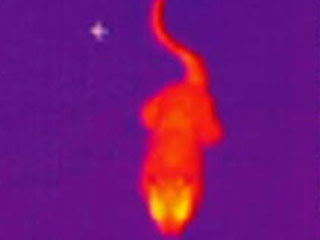
http://www.bccn-munich.de/news-views/bccn-research-news/catching-prey-in-darkness
